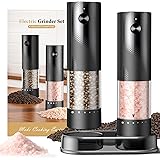Our site contains ads and uses Amazon affiliate links. We may earn a small commission at no extra cost to you. We know ads can be distracting, and we’re sorry for any inconvenience they cause. It helps us keep the site running. Thanks for your understanding and supporting us!
Walk into your kitchen and breathe in that golden honey-glazed chicken smell. Garlic and herbs dance with smoky charred lemon. Your mouth waters before you even sit down.
This Baked Honey Balsamic Chicken hits different. Juicy chicken. Crisp asparagus. Tangy feta. Bright citrus pop. Every bite surprises you.
Simple ingredients become magic here. Want to impress on a Tuesday? Done.
Hosting friends? They’ll think you’re a chef.
One pan does all the work while flavors get cozy together. Plus, you’ll learn plating tricks that make it look restaurant-worthy.
Less mess. More wow. That’s dinner tonight.
Why This Recipe Stands Out
- Sweet Meets Savory The rich balsamic vinegar and honey marinade creates a delectable glaze that perfectly complements the tender chicken.
- Citrus Infusion Charred lemon wedges add a smoky brightness, enhancing the overall flavor profile.
- Creamy Feta Finish Crumbled feta cheese introduces a tangy creaminess that balances the dish’s sweetness and acidity.
- One-Pan Wonder Minimal cleanup required as everything cooks together on a single sheet pan.
- Versatile Pairing Serve over rice, pasta, or alongside crusty bread for a complete meal.
Ingredients You’ll Need
- 2 pounds boneless, skinless chicken breasts or thighs
- 1/3 cup balsamic vinegar
- 3 to 4 tablespoons honey
- 2 teaspoons Worcestershire sauce
- 2 shallots, chopped
- 2 cloves garlic, minced
- 2 teaspoons dried thyme
- 2 teaspoons dried oregano
- Salt and freshly ground black pepper to taste
- Pinch of chili flakes optional
- 1 bunch asparagus, ends trimmed
- 2 tablespoons salted butter
- 1 lemon, quartered
- 1/2 cup crumbled feta cheese
- 2 tablespoons toasted pine nuts or seeds of choice
- 1/2 cup chopped fresh herbs dill and cilantro recommended
Tools to Use
- Large mixing bowl
- Sheet pan
- Oven
- Sharp knife
- Cutting board
- Tongs or spatula
- Serving plates
Bear Glass Cup with Straw, Clear Bear Straw Cup, 20oz Cute Bears Glass Cup With ...
$27.99 (as of November 9, 2025 23:28 GMT +00:00 - More infoProduct prices and availability are accurate as of the date/time indicated and are subject to change. Any price and availability information displayed on [relevant Amazon Site(s), as applicable] at the time of purchase will apply to the purchase of this product.)Astercook Deep-Carbonized Bamboo Cutting Boards for Kitchen with Wood Storage St...
$24.99 (as of November 9, 2025 23:28 GMT +00:00 - More infoProduct prices and availability are accurate as of the date/time indicated and are subject to change. Any price and availability information displayed on [relevant Amazon Site(s), as applicable] at the time of purchase will apply to the purchase of this product.)Electric Salt and Pepper Grinder Set - Rechargeable Automatic Salt and Pepper Sh...
$22.99 (as of November 9, 2025 23:28 GMT +00:00 - More infoProduct prices and availability are accurate as of the date/time indicated and are subject to change. Any price and availability information displayed on [relevant Amazon Site(s), as applicable] at the time of purchase will apply to the purchase of this product.)How to Make Lemon Feta Honey Balsamic Chicken
Step-1: Marinate the Chicken
In a large mixing bowl, combine balsamic vinegar, honey, Worcestershire sauce, chopped shallots, minced garlic, dried thyme, dried oregano, salt, pepper, and chili flakes.
Whisk until the mixture becomes glossy and aromatic. Add the chicken pieces, tossing gently so each piece is fully coated.
Cover and refrigerate for at least 30 minutes to allow the flavors to penetrate the meat. The aroma of garlic, herbs, and sweet honey will intensify as the chicken marinates.
Step-2: Prepare the Sheet Pan
Preheat your oven to 450°F (232°C). Arrange the marinated chicken in a single layer on a sheet pan.
Surround the chicken with the trimmed asparagus, their vibrant green tips peeking out. Dot the asparagus with small pats of salted butter and sprinkle lightly with salt and pepper.
As the pan heats, the butter melts and mingles with the juices from the chicken, creating a subtle, savory aroma.
Step-3: Roast the Chicken and Asparagus
Place the sheet pan in the oven. As the chicken roasts, notice the honey-balsamic glaze starting to bubble and caramelize, releasing a rich, sweet fragrance.
Roast for 15 to 20 minutes until the chicken is tender and golden-brown and the asparagus is bright green yet slightly crisp.
The gentle sizzling sound as juices mingle signals that the flavors are coming together beautifully.
Step-4: Broil for Caramelization
Switch the oven to broil. Remove the asparagus temporarily to prevent overcooking. Return the chicken and lemon wedges to the oven.
Watch closely as the glaze thickens into a sticky, glossy caramel while the edges of the lemon wedges darken, releasing a smoky citrus aroma.
Broil for 1 to 2 minutes and remove once the chicken reaches a perfect caramelized finish.
Step-5: Prepare the Charred Lemon Feta
Finely chop two to three of the charred lemon wedges. In a bowl, combine the lemon with crumbled feta cheese, toasted pine nuts, and fresh herbs.
Toss gently to mix the flavors and aromas, creating a tangy, smoky topping with a vibrant green and golden appearance.
Step-6: Plate and Garnish
Arrange the roasted chicken on serving plates with the asparagus neatly alongside. Stack the chicken slightly on top of the asparagus to add height and visual interest.
Spoon the charred lemon feta mixture directly onto the chicken, letting some spill naturally onto the plate for a rustic effect. Sprinkle a small pinch of fresh lemon zest over the top for brightness.
Add delicate sprigs of dill or cilantro for an extra touch of color and aroma.
For a refined, restaurant-style look, drizzle a thin stream of balsamic glaze around the plate. Consider adding a few roasted cherry tomato halves or red bell pepper slices for contrast.
Serve immediately and enjoy the layered aromas, textures, and flavors.
Related Recipes You’ll Love to Try
- Sparkling Caramel Apple Cider Sangria Mocktail For Everyone
- Creamy Maple Brown Sugar Oatmeal: Better Than Store-Bought
- Moist Vanilla Candy Corn Cupcakes with Marshmallow Frosting
- Healthy Pumpkin Chocolate Chip Muffins (One-Bowl)
Nutritional Information
Per Serving:
- Calories: Approximately 400 kcal
- Protein: 35g
- Fat: 20g
- Carbohydrates: 15g
- Sodium: 600mg
Note: Nutritional values are estimates and may vary based on specific ingredients used.
Tips for Success
- Marinate longer for deeper flavor. If time allows, marinate the chicken for several hours or overnight.
- Use fresh herbs at the end. Adding dill or cilantro just before serving keeps the flavors bright and vibrant.
- Rest the chicken briefly. Letting it sit for 2 to 3 minutes after baking helps the juices redistribute, keeping it moist.
- Toast the nuts lightly. Toasting pine nuts or seeds before adding enhances their nuttiness and adds crunch.
- Serve warm. The feta topping tastes best when slightly melted from the heat of the chicken.
Common Mistakes to Avoid
- Overcrowding the pan. This prevents proper caramelization and can make the chicken steam instead of roast.
- Overcooking the asparagus. It cooks quickly and should remain crisp-tender rather than mushy.
- Broiling too long. Honey and balsamic caramelize fast, so watch carefully to avoid burning.
- Skipping the charred lemon. The smoky citrus flavor is key to balancing the sweetness of the glaze.
- Using cold chicken straight from the fridge. Allowing the chicken to rest at room temperature before roasting ensures even cooking.
Frequently Asked Questions
What can I substitute for Worcestershire sauce?
If you do not have Worcestershire sauce, soy sauce works as a substitute. For a more complex flavor, mix soy sauce with a splash of vinegar and a pinch of sugar to achieve a similar tangy-sweet profile.
Can I use bone-in chicken instead of boneless?
Yes, bone-in chicken can be used. Adjust the cooking time accordingly, as it will take longer to reach the proper internal temperature of 165°F (74°C) for safe consumption.
Is there a vegetarian alternative to this dish?
For a vegetarian version, use hearty vegetables such as cauliflower steaks or portobello mushrooms as the main protein. Marinate and roast them in the same manner as the chicken, adjusting cooking times as necessary.
How can I make this dish spicier?
Increase the amount of chili flakes in the marinade or drizzle the finished dish with a spicy honey or hot sauce to elevate the heat.
Can I prepare this dish in advance?
Yes, marinate the chicken up to 24 hours in advance. Refrigerate until ready to cook and allow the chicken to reach room temperature before roasting for even cooking.








